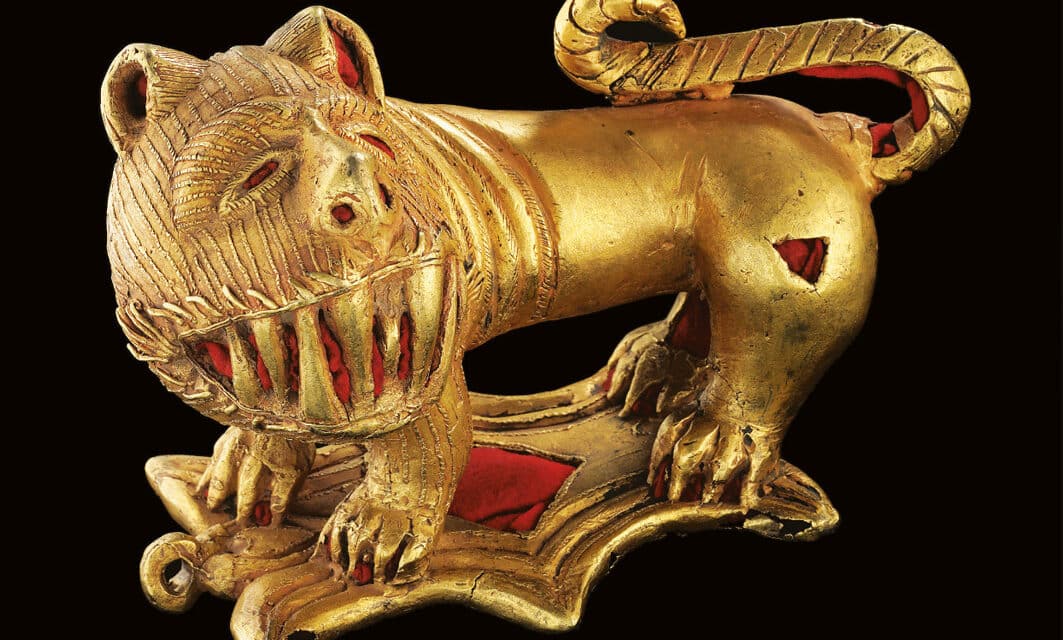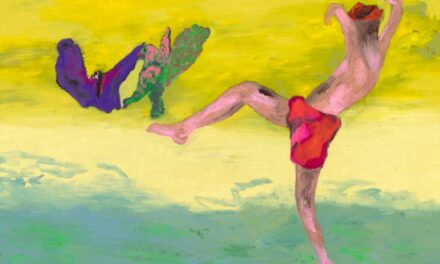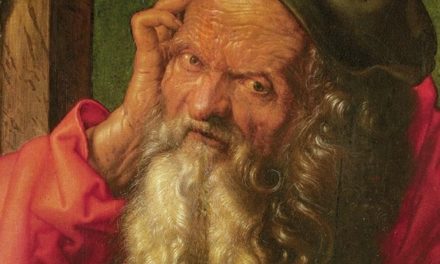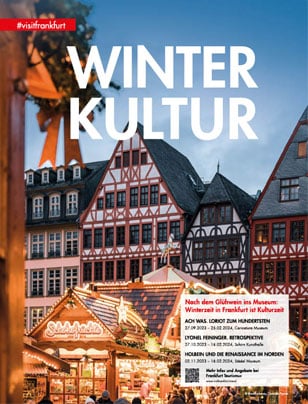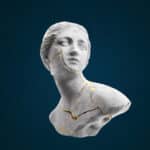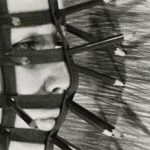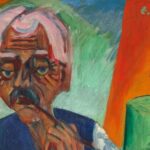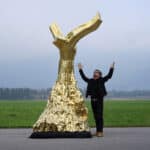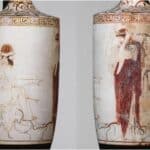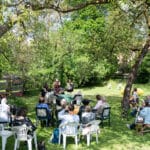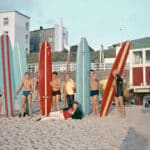The Knauf Museum Iphofen is presenting the special exhibition "The Gold of the Akan" from March 17, 2024. The West African culture of the Akan, native to the republics of Ghana and Ivory Coast, has a long tradition of processing gold for jewelry and cult objects with the highest level of craftsmanship. The majority of the more than 300 exhibits in the exhibition date from the 19th and 20th centuries, although individual pieces are much older. They include all relevant types of Akan gold objects, from imposing rank insignia and filigree jewelry to elegant wood carvings. All the exhibits come from the extensive Liaunig Collection in Carinthia, which is one of the world's most important collections on this subject alongside the British Museum in London, the Museum of Fine Arts in Houston and the Gold of Africa Museum in Cape Town and is now on display outside Austria for the first time.
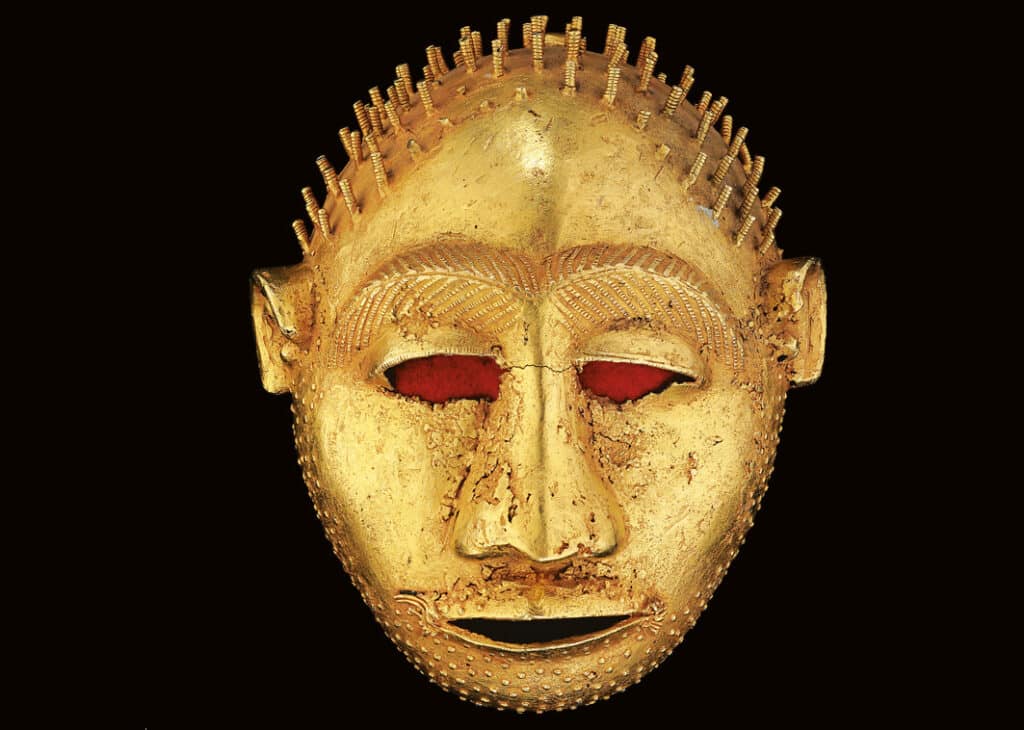
Sword emblem of a human head, gold, on loan: Museum Liaunig Collection
Cultural diversity in consummate craftsmanship
The works on display represent the extremely broad spectrum of craftsmanship in the royal tribes of the Asante, Baule, Fante, Bono and other sub-groups of the Akan ethnic group, which are organized into 120 officially recognized traditional Akan states. They are united by the common language Twi, central beliefs, a predominantly matrilineal social structure and, in particular, the art of gold processing with its unique aesthetic quality in both style and design. Their social structures and cultural forms of expression are finely differentiated. The resulting rich wealth of motifs in Akan gold is combined with the meaning that the Akan assign to language and its metaphors, for example in pointed visualizations of their proverbs for every occasion. This decision to adhere to an elementary figurativeness runs through the variety of golden exhibits as well as geometric forms as design elements. In this way, the predominantly courtly pieces of jewelry open up access to the cultural history of the Akan states. Their traditional goldsmith's art is reminiscent of modern design and draws an arc of art theory right up to the present day.
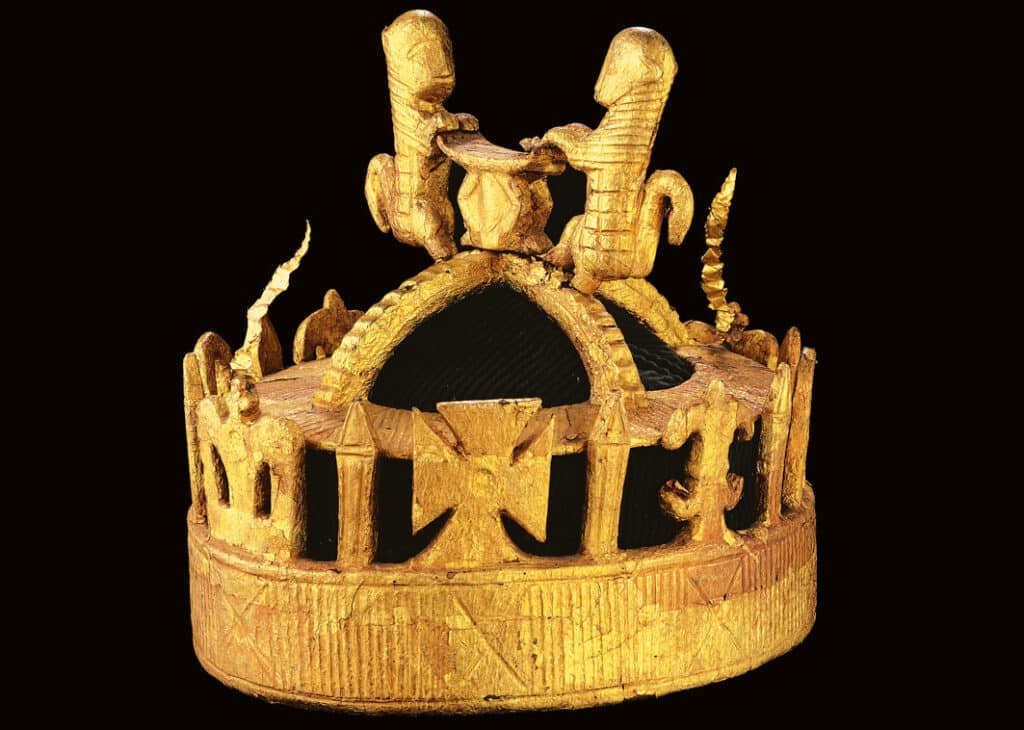
Crown of a regent, wood, gold leaf, on loan from the Liaunig Museum Collection, photo: Rado Varbanov
The importance of gold for the Akan
Gold plays a decisive role in Akan culture in various ways and is omnipresent. It characterizes the outward appearance of the individual members. Objects and ornaments cast or platinum-plated in gold serve as insignia of rank and indicate social status. The rank of chief, for example, can be seen in the lavish regalia - gold-decorated crowns, amulets, massive bracelets or gold-plated sandals, which the regent puts on at his inauguration, define the rank of a "paramount chief", as does his ornately decorated state chair, which is kept in his memory even after his death. Gold is also a central component of political events and war equipment from swords to spears, shields and firearms is covered with golden motifs. Cultic and everyday activities are accompanied by gold, as can be seen from the golden images on the speaking sticks.
The Liaunig Collection
The Austrian art collector Herbert Liaunig (1945-2023) first came across West African art from Ghana and the Ivory Coast in Zurich. Over the years, he acquired individual objects from the gallery of René David (1928-2015) and his wife, until the son of the two gallery owners and now managing director, Jean David, finally offered him his parents' entire gold collection, comprising 400 objects that his father had acquired since 1957. René David already lived mainly in Ghana at that time and built up his exclusive collection over four decades during months of traveling through Mali, Cameroon, Congo and the Ivory Coast. Thanks to his continuous presence, he was one of the few white people to be accepted into the innermost circles of Ghanaian society and maintained contact with the royal family until his death. In 2002, David donated some of his objects to the state of Ghana, for which he received great recognition.
Today, the collection can be viewed in the Museum Liaunig in Carinthia as a counterpoint to the museum's contemporary art in a specially designed annex underground. For the duration of the exhibition at the Knauf Museum Iphofen, "The Gold of the Akan" can be seen outside Austria for the first time.
March 17 to November 10, 2024
The Knauf Museum Iphofen
In 1973, plaster manufacturer and patron of the arts Dr. Alfons N. Knauf began converting a magnificent baroque building from 1688 in Iphofen into a private museum. Dr. Knauf, who was fascinated by the study of plaster throughout his life, spent ten years traveling the world's major museums together with his brother Karl Knauf, collecting plaster casts of their most exclusive exhibits. Today, the Knauf Museum Iphofen presents over 200 replicas of the renowned museum pieces from all over the world. Since its opening on June 30, 1983, visitors have been able to marvel at relief collections from the great cultural epochs of mankind, dating back to 3,500 BC. In addition to the permanent exhibition, the Knauf Museum Iphofen regularly develops exclusive and unique special exhibitions on its own initiative. The museum cooperates with numerous internationally renowned art museums.
www.knauf-museum.de

